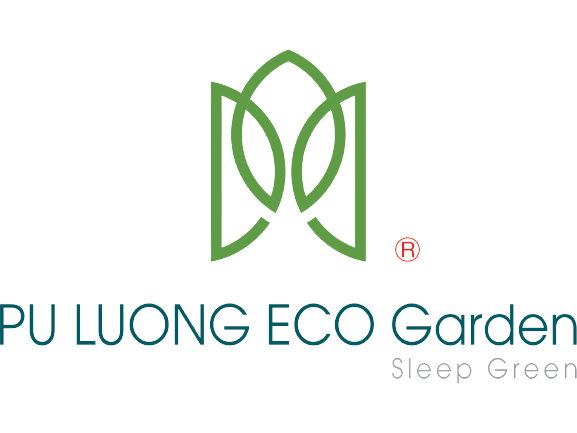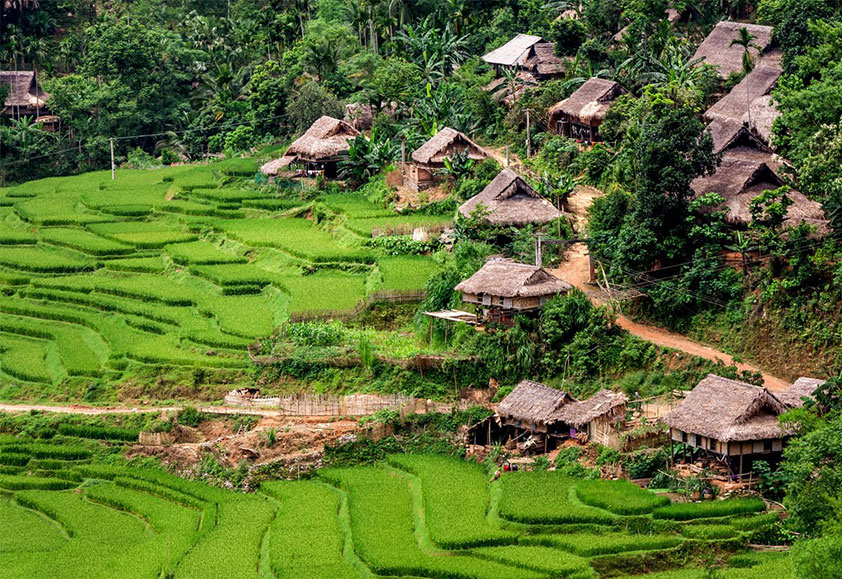
This Pu Luong travel guide will help you to plan your stay in this wonderful nature reserve the best way. When to go, what to do, where to sleep!
About Pu Luong Nature Reserve:
You can access comprehensive and detailed information about Pu Luong Nature Reserve in our dedicated article available here >
In essence, Pu Luong can be likened to a compact Sapa, boasting remarkable mountain ranges; it offers a glimpse of the awe-inspiring rice terraces reminiscent of Mu Cang Chai, and encompasses the essence of Mai Chau Valley with its ethnic minority villages. It amalgamates the finest attributes from the renowned regions of Northwest Vietnam into a singular location.
Pu Luong has effectively amalgamated the most exceptional features of these renowned areas that have garnered international acclaim for Northern Vietnam. This convergence has resulted in an essential destination that discerning travelers consistently incorporate into their itineraries. The Pu Luong travel guide will illuminate the reasons behind this imperative addition to your travel plans.
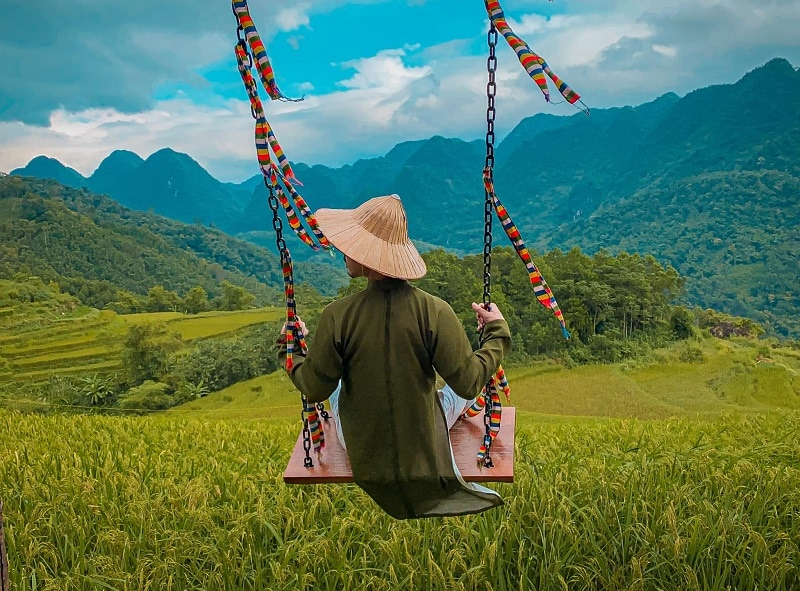
Pu Luong “best time to visit” travel guide :
Selecting the ideal time to embark on a journey is a paramount consideration for every traveler when crafting their itinerary. While some fortunate individuals possess the luxury of flexible dates, others may face constraints. This Pu Luong Travel Guide is designed to equip you with insights into what to anticipate based on the time of year.
When envisioning Northern Vietnam, one of the foremost iconic images that comes to mind is the expanse of vibrant rice paddies. Fortuitously, this spectacle takes center stage in Pu Luong as well. Given the region’s biannual rice cultivation, there are abundant opportunities to revel in the captivating hues of the rice terraces.
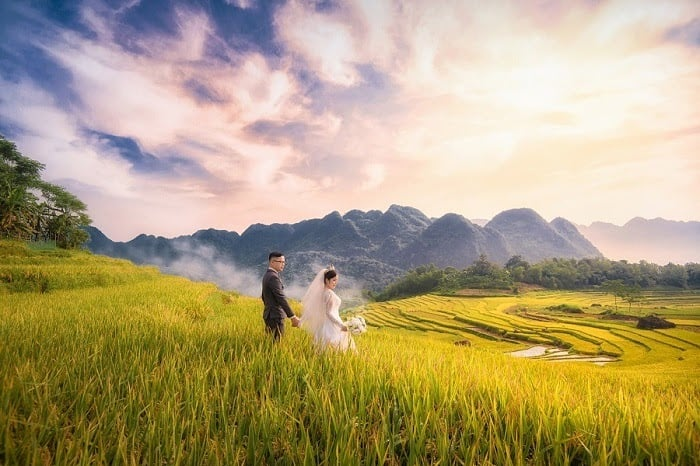
THE RICE GOLDEN SEASON
Let’s talk about the “beautiful rice season.” This is when the rice turns yellow before it’s harvested. You can see this in May and October. These months are also when the rice is collected. May can be pretty hot because it’s really humid, but October usually has great weather. It’s not too hot, around 25°C during the day, and it’s sunny most of the time. Rain doesn’t happen very often.
October is the best month because the weather is nice, and the rice fields are yellow. Lots of people visit Pu Luong in October, so it’s a good idea to book your place to stay early for more choices.
SUMMER TIME IN PU LUONG NATURE RESERVE
Summer, from July to September, is a great time to experience Pu Luong. Although it can get really hot, most hotels now have swimming pools and air-conditioned rooms. During these months, the rice fields transition from water-covered terraces to lush green ones. While daytime temperatures can soar (even over 35°C), evenings bring relief. Any intense storms that might occur in the late afternoon or at night won’t disrupt your daytime plans.
In June, the rice harvest takes place, and it’s usually the hottest time with high humidity. But don’t worry, there are plenty of other things to do besides enjoying the rice field scenery.
SPRING TIME
March to April mirrors the conditions of July to September. The rice terraces transform as young shoots evolve into tall, green plants. The weather is cool, and sometimes even chilly in March. Changes are frequent, ranging from clear blue skies to encroaching fog.
FALL AND WINTER
November is distinct. Rice harvest begins at the start of the month, followed by a fallow period as farmers tend to the fields. Despite being the tail end of the rice season, the weather remains delightful, mostly sunny with temperatures around 25°C.
Winter, spanning December to March, isn’t prime rice season. Fields rest and recover their energy until spring. For hotels with views solely of rice fields, it’s less captivating. Opting for a mountain view is more rewarding. Enjoying a warm local tea on your balcony remains a delightful pursuit.
To recap, Pu Luong Nature Reserve is enchanting from March to November. Although winter isn’t peak rice season, it still offers pleasant conditions. You’ll discover in this Pu Luong Travel Guide that a wide range of activities suit every season.
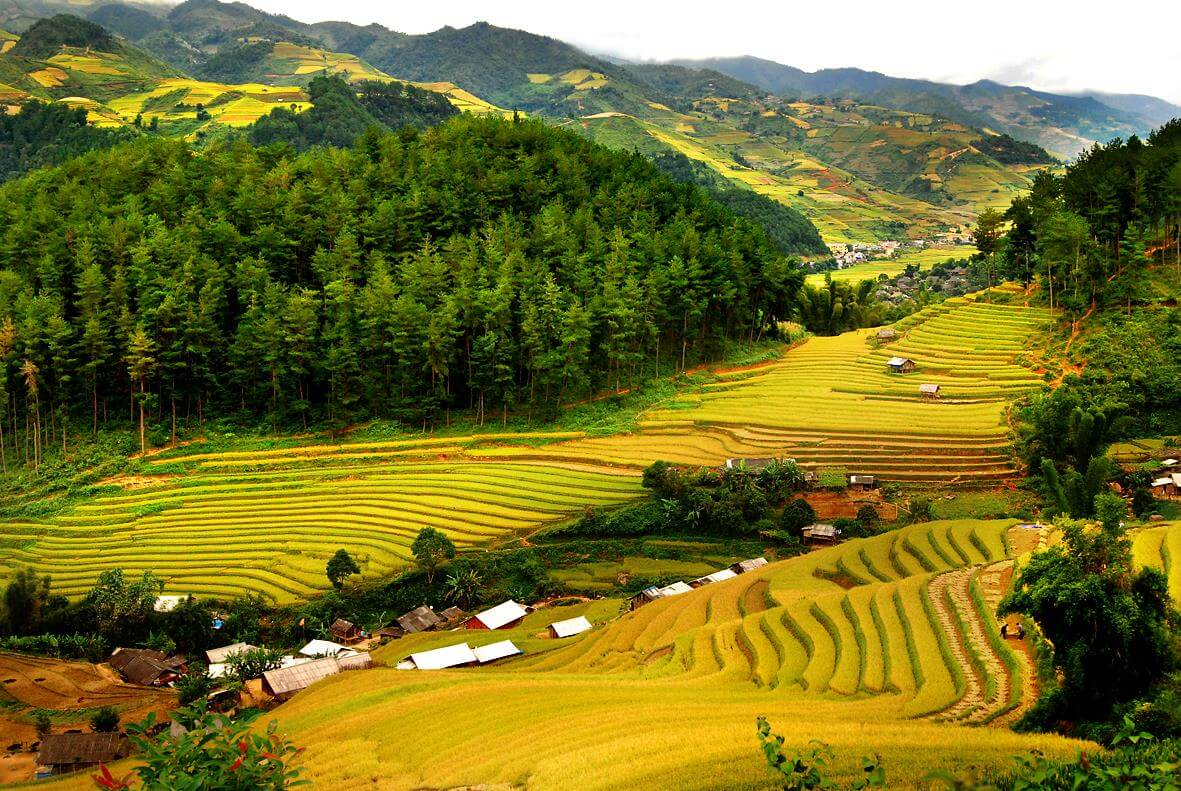
Pu Luong transportation travel guide:
The distance between Hanoi and Pu Luong is approximately 180 km, and there are three routes leading to the Reserve. The first route follows the Ho Chi Minh trail, the second traverses the Mai Chau valley, and the third cuts through the heart of the Reserve.
By Bus:
A daily luxury bus operated by Eco Travel Go Green departs from the old quarter at 7 am and arrives in Pu Luong around 12 pm. This comfortable bus comes equipped with WIFI. You’ll be dropped off at the entrance of Don village or any other hotels along the main road to Bang village.
By Car:
The second option is to rent a private car, which takes around 4 hours. This choice gives you the freedom to select your route and stop whenever you wish. Opt for the Ho Chi Minh road for a quicker journey. If you have extra time and want to enjoy some sights along the way, you can pass through Mai Chau. Take a break at the picturesque Tung Khe pass, one of North Vietnam’s most beautiful, and explore the local market. You can even arrange to have lunch in Mai Chau, admiring the valley before reaching Pu Luong.
Alternatively, you can choose to travel through the Reserve itself. This route offers a chance to stop at Son Ba Muoi, where you can capture untouched landscapes from different viewpoints. You can find more details about Son Ba Muoi here >
By motorbike:
The final option is to journey to Pu Luong by motorbike. The northern region of Vietnam is a fantastic playground for motorcycle enthusiasts. In this case, the Ho Chi Minh trail might not be as exhilarating. Opting for the alternative route can prove more interesting. You can refer to our Pu Luong Motorbike Tour travel Guide for additional insights to plan your trip here >
Eco Travel is here to assist you in arranging transportation bookings. Don’t hesitate to share your preferred options with us here >
Pu Luong highlights travel guide:
Must-Do Activities in Pu Luong:
- Explore the concealed village of Kho Muong, along with its expansive “Bat Cave,” the largest cave within the Reserve.
- Embark on a trek through the mesmerizing rice fields and uncover hidden valleys.
- Indulge in the flavors of local cuisine, with a specialty being duck dishes.
- Engage in a jungle expedition within the serene palm tree or bamboo forests.
- Take a trip to Hieu village and take a refreshing dip in its inviting waterfall.
- Immerse yourself in cultural activities such as farming, sewing, and cooking, connecting with local traditions.
- Scale the heights of Pu Luong Peak for panoramic vistas.
- Experience authentic local life in Son Ba Muoi, a lesser-explored, off-the-beaten-path gem.
- Explore the vibrant Pho Doan market, open every Thursday and Sunday from 5.30 am to 10.30 am.
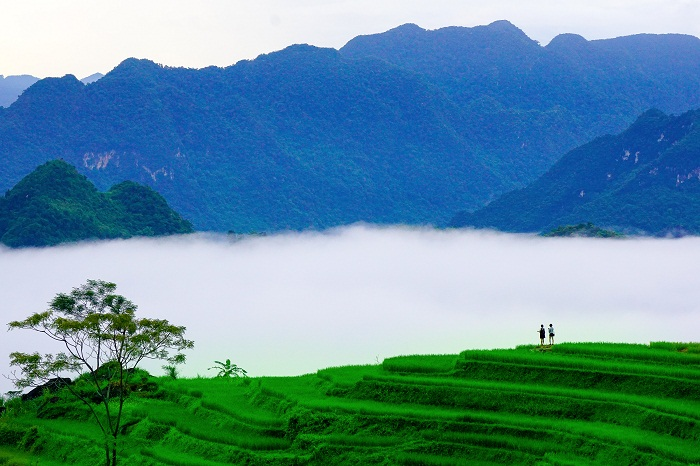
Pu Luong activities travel guide :
Pu Luong Nature Reserve offers a plethora of activities thanks to its diverse landscape and rich cultural milieu. Throughout the year, a wide array of options await, catering to adventurers, leisurely travelers, and those seeking cultural connections. Regardless of your preferences, Pu Luong holds something special for everyone.
- Trekking: Exploring the area’s beauty and charm through trekking is immensely rewarding. Trails cater to various skill levels, from half-day walks on flat terrain to multi-day journeys connecting different villages. More daring adventurers can aim for the summit of Pu Luong mountain (at 1700m), hiking through the jungle.
- Bamboo Rafting: Glide along the Ma river on a traditional bamboo raft, often accompanied by an easy trek passing local villages and showcasing impressive bamboo waterwheels.
- Motorbike Tour: Those with limited time or who prefer not to trek can explore villages and waterfalls on motorbike. Rent one on-site or arrange package tours from Hanoi for a convenient adventure.
- Cooking Class: Delve into local cuisine by joining a cooking class led by locals. Homestay guests can cook with their hosts, while those seeking a deeper understanding of Thai cooking techniques can take a class. The experience often begins with a trek to gather ingredients before preparing traditional dishes.
- Farming: Immerse yourself in local life by participating in daily farming activities alongside locals. Depending on the season, you can learn planting or harvesting techniques. Guides can incorporate farming experiences into treks, or you can simply approach locals during your stroll.
- Relaxation by the Pool or Balcony: Don’t miss the opportunity to unwind. Savor a morning coffee, a sunset cup of tea, or a glass of wine. Watching the sunrise around 5 am is an option for the early risers, revealing a stunning pink sky and the sun cresting the mountains—an unforgettable moment.
Event / seasonal activities:
- Running a Marathon: The Pu Luong Jungle Marathon, organized by Topas Travel, presents an exciting challenge. The course features dirt paths, drawing runners from across Asia and beyond to test their mettle and extend their stay to enjoy the Reserve’s splendor.
- Camping: Embark on an exhilarating camping adventure, spending the night in a tent amid nature after enjoying a sumptuous barbecue dinner.
Accommodation in Pu Luong:
Eco Travel could not be complete without a review and some recommendations on which hotels to sleep during your stay.
Many new hotels have opened, even with Covid around. Because Pu Luong has become popular for people in the country, you’ll find modern hotels with three-star quality and swimming pools. They’re mostly in Don village and along the main road to Bang village.
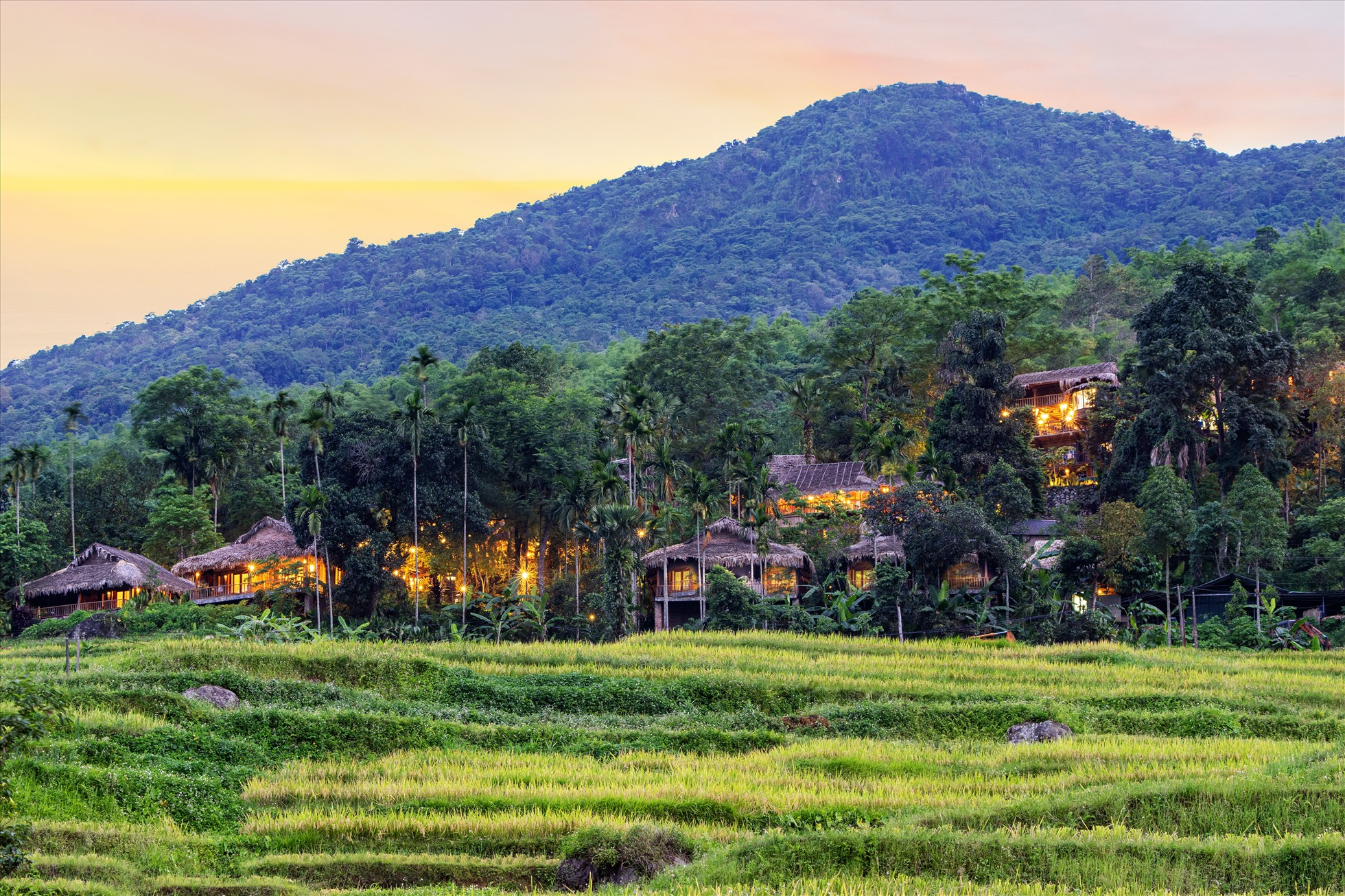
Here are our top hotel recommendations:
In Don village:
- Pu Luong Retreat: The very first 3-star hotel in Pu Luong and a reliable choice. The rooms are nicely decorated with a local touch. You can pick from dorms, deluxe rooms, or private bungalows. The view from the rooms and the two infinity pools is really stunning. (For more details, check here > )
- Pu Luong Home: One of the pioneers in setting up homestays in Pu Luong. In the past, accommodations were quite basic with dorms and simple private rooms, but now they have these new open-view bungalows that offer a fantastic sight of the rice fields and mountains. It’s only 50 meters away from Pu Luong Retreat.
- Pu Luong Natura Bungalows: This place is a strong competitor to Pu Luong Retreat in Don village. The hotel offers dorms, basic private rooms with shared bathrooms, and some amazing bungalows with large windows that look out onto the rice fields. You can enjoy the same view while relaxing in their two infinity pools.
- Pu Luong Tree House: This is a unique spot right outside the village, tucked away on a small forested islet, surrounded by rice terraces. It’s like an original tree house with a swimming pool and some private rooms nestled in the trees.
- Lua Pu Luong: Managed by Lua, who loves yoga. It has a nice swimming pool, cozy rooms, and a peaceful atmosphere. The view might not be as breathtaking, but if you’re looking to relax and enjoy wellness activities, this is a great option.
On the main road to Bang Village:
- Pu Luong Eco Garden: Located in Bang Village, Eco Garden has played a significant role in Pu Luong’s growth. There are various options, including dorms, private rooms, and deluxe accommodations. The new villas with private outdoor bathtubs boast modern decorations. The infinity pool’s view is one of Pu Luong’s most stunning.
- Pu Luong Eco Charm: Sitting atop the road’s elevated side, the view from the six private bungalows is breathtaking, encompassing the rice fields and mountains. Hanh, the owner and manager, is a local Thai from Mai Chau and offers exciting tours. The place is peaceful, and a small swimming pool provides relaxation after treks.
- Pu Luong Casa: A recent addition, Pu Luong Casa presents a modern outlook. The well-equipped rooms are housed in two-story buildings, offering fantastic valley and mountain views. The swimming pool is ideally positioned, overlooking the mountain range.
- Pu Luong Bocbandi Retreat: Another newcomer with high-standard lodging, Pu Luong Bocbandi Retreat delivers splendid accommodations. Both the rooms and the pool afford views of the rice fields, elevated on the hotel’s rooftop with the mountain range as a backdrop. The unique cubic-style bungalows each feature a private balcony, providing a relaxing spot after an exciting day of exploration.
Other areas:
Here are some insider tips from our Pu Luong travel guide to help you venture beyond the tourist hotspots and immerse yourself in the local way of life. Consider adding a few nights in different corners of the Reserve to enhance your experience. Here’s a glimpse into some of our Pu Luong travel guide’s hidden gems:
- For a unique stay, consider spending a night in Hieu village. If the village has undergone rapid development, you might find a cozy retreat at Tai Dam homestay, nestled on the higher terrain. This is a fantastic opportunity to embark on a jungle tour led by a knowledgeable local guide.
- While Kho Muong is typically a short stop for half or full day treks, don’t underestimate its charm. There are modest homestays available for those seeking an authentic local encounter. This is an ideal point for embarking on multi-day treks, meandering through picturesque villages along the way.
- In Son Ba Muoi, accommodation options are somewhat limited, and luxury standards are yet to fully materialize. However, spending a night here offers an exceptionally special experience, marked by warm interactions with the friendly locals. For more detailed insights, check out our dedicated Son Ba Muoi travel guide article [hyperlink here].
Our comprehensive Eco Travel equips you with essential information and valuable recommendations to plan your trip seamlessly. Should you have any queries or uncertainties, feel free to reach out to us directly. Our team is here to extend support and craft customized tours, complete with delightful surprises tailored to your preference.
